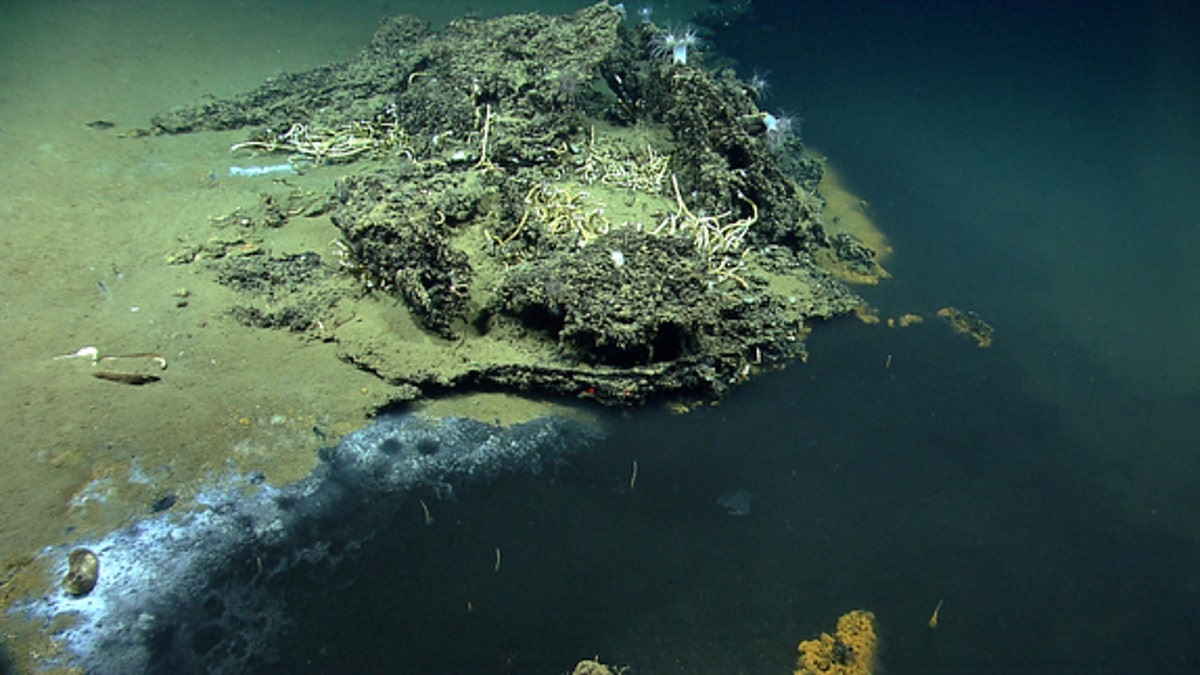
Marine life, including tubeworms, clusters on the shore of a brine pool in the Gulf of Mexico. (NOAA Okeanos Explorer Program, Gulf of Mexico 2014 Expedition))
This month, you can fly along the Gulf of Mexico seafloor and explore a strange ecosystem fueled by chemicals instead of sunlight, all from your computer.
The journey to the deep sea comes courtesy of a remotely operated vehicle and camera sled that will send back live video to the Okeanos Explorer, the National Oceanic and Atmospheric Administration's research vessel. Scientists aboard the Okeanos are exploring the Gulf of Mexico's deep underwater habitats, which include mud volcanoes, methane seeps, brine pools, submarine canyons and shipwrecks.
The planned exploration will occur roughly south of the Flower Garden Banks National Marine Sanctuary, offshore of Galveston, Texas.
[Watch Live: Life in the Deep Sea]
Live video feeds will broadcast from the shipwrecks on April 15, 16 and 24, according to a statement from NOAA. Researchers will explore a deep-sea canyon on April 22.
Video feeds and images posted at the expedition website have already featured the unusual marine life that feeds on hydrocarbons burbling from the seafloor. On the first dive, which occurred Saturday (April 12), researchers discovered oil and gas bubbles seeping from the seafloor and near a large brine pool very salty water ponded on the seafloor. (The briny water comes from salt deposits beneath the seafloor.)
Anemones, fish, corals, sea stars, crustaceans and tubeworms were clustered next to the brine pool, which was about 32 feet wide and 328 feet long.
The 59-day expedition runs from April 10 to May 1, and is the third leg of a three-part mission to explore the gulf. Researchers with the mission are both aboard ship and participating remotely via the live video feed.
